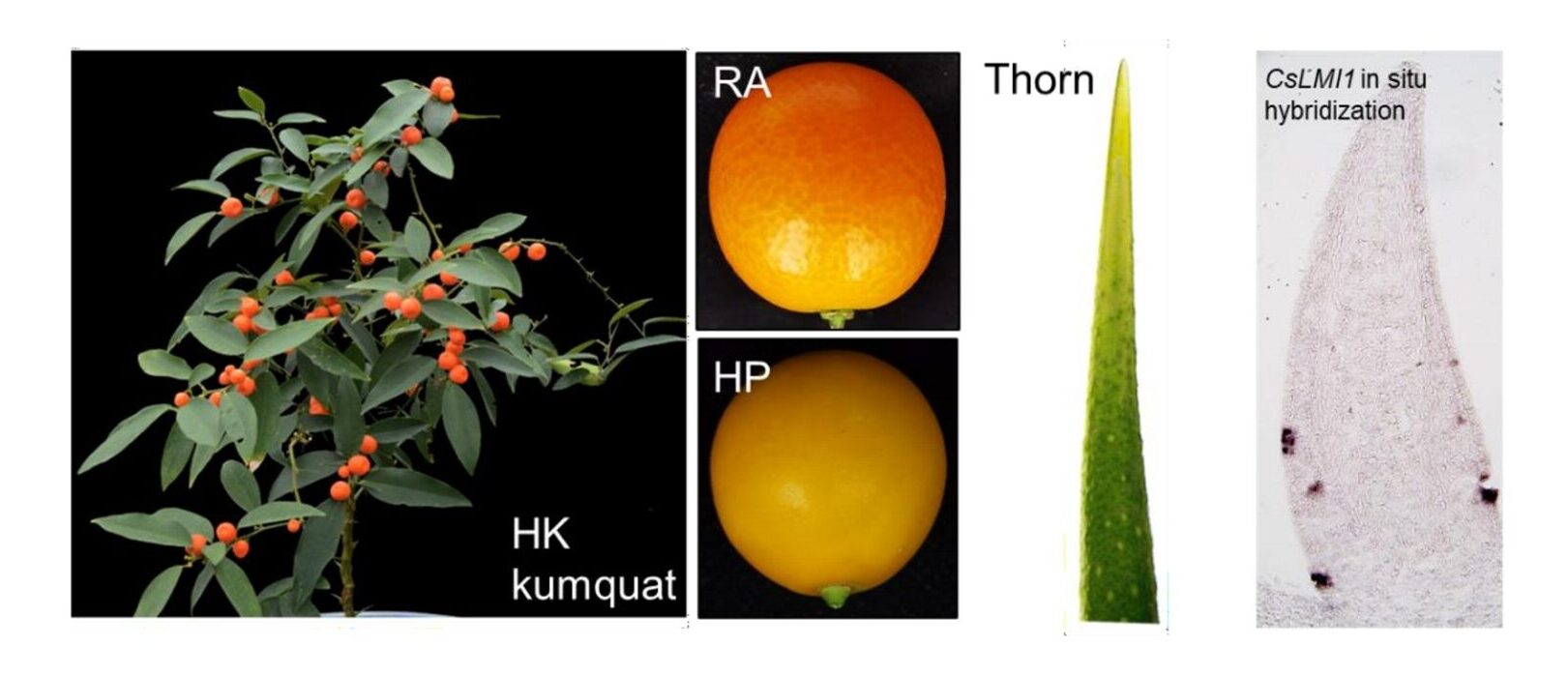
Citrus fruits, such as oranges, lemons, and grapefruits, are well-known for their refreshing flavor and aroma, which come from the essential oils stored in their oil glands. These tiny structures, located under the peel, are unique to the Rutaceae family of plants and have various applications in food, medicine, and cosmetics. But how do these oil glands form and produce the essential oils? A team of researchers from Huazhong Agricultural University (HZAU) has shed light on this mystery in a paper published in the prestigious journal Science on February 9, 2024.
The paper, titled “Molecular regulation of oil gland development and biosynthesis of essential oils in Citrus spp.”, reveals the molecular mechanism behind the initiation and differentiation of citrus oil glands. The authors, led by Professor Deng Xiuxin and Professor Zhang Fei from the National Key Laboratory of Innovation and Utilization of Horticultural Crop Germplasm, used genetic mapping and genome editing techniques to identify the key genes and the regulatory pathway involved in this process.
Surprisingly, the key components of this pathway are two transcription factors, CsDRNL and CsLMI1, both of which are also necessary for leaf serration in Citrus. Epidermis-expressed CsDRNL directly activates the CsLMI1 expression, which then maintains its own expression until the lumen of the cavity begins to form. The CsDRNL-CsLMI1 regulatory module is essential for the expression of CsMYC5, encoding a regulator for oil gland sheath cell differentiation and cavity formation, in addition to the role of promoting secondary metabolites (terpenoids, flavonol, lipids) biosynthesis. Thus, a CsDRNL-CsLMI1-CsMYC5 regulatory pathway specifies secretory cavity (Fig. 1), different from that for glandular trichomes.

They employed a combination of forward and reverse genetic strategies to identify key genes regulating the initiation and development of oil glands (Fig. 2). By crossing a glandless kumquat (HP, Fortunella crassifolia), natural mutant of RA, with Mini-Citrus (HK, Fortunella hindsii) and conducting mapping analyses using an F2 population, they cloned the causal gene CsLMI1. By taking advantage of the simplifying nature of the Citrus thorn model system, they identified the critical cis-element (GCC box) of CsLMI1 and the associated trans-acting factor CsDRNL for oil gland initiation.
The paper has important implications for both basic and applied research. This research has successfully unraveled the regulatory pathway responsible for secretory cavity formation, thereby solving a long-standing mystery in the field. Furthermore, the methodology of this work can be extended to unravel the mystery surrounding inner secretory structures, such as resin ducts and laticifers, which are equally complex and challenging to investigate. In addition, the work also holds significant applied value. First, glandless kumquats (such as CRISP HONEY) are highly appreciated by the market due to their much better taste. Second, Citrus essential oils have aromatic, flavoring, medicinal, and preservation properties that have broad applications. Thus, this work provides important knowledge that can be leveraged to improve citrus fruit quality and essential oils production.

The paper also highlights the following three major advances in the field of secretory structures:
Discovery of CsLMI1 as a central regulator for secretory cavity initiation and development. Identification of a novel mechanism that connects the epidermal signal with the subepidermal secretory structure development. Demonstration the coordination of secretory structure formation and secondary metabolites biosynthesis.
The paper is co-authored by Wang Hongxing and Ren Jie, doctoral students of the citrus team of HZAU, and co-corresponded by Professor Deng Xiuxin and Professor Zhang Fei from the National Key Laboratory of Innovation and Utilization of Horticultural Crop Germplasm. Professor Guo Wenwu provided important help, and several teachers from the citrus team also participated in this study. Chen Chuanwu from the Guangxi Institute of Specialty Crops and Guangxi Rong’an County Agriculture and Rural Bureau provided industry information. This project is supported by the National Natural Science Foundation of China, the National Natural Science Foundation of China for Outstanding Young Scholars (overseas), and the Hubei Hongshan Laboratory Project.

